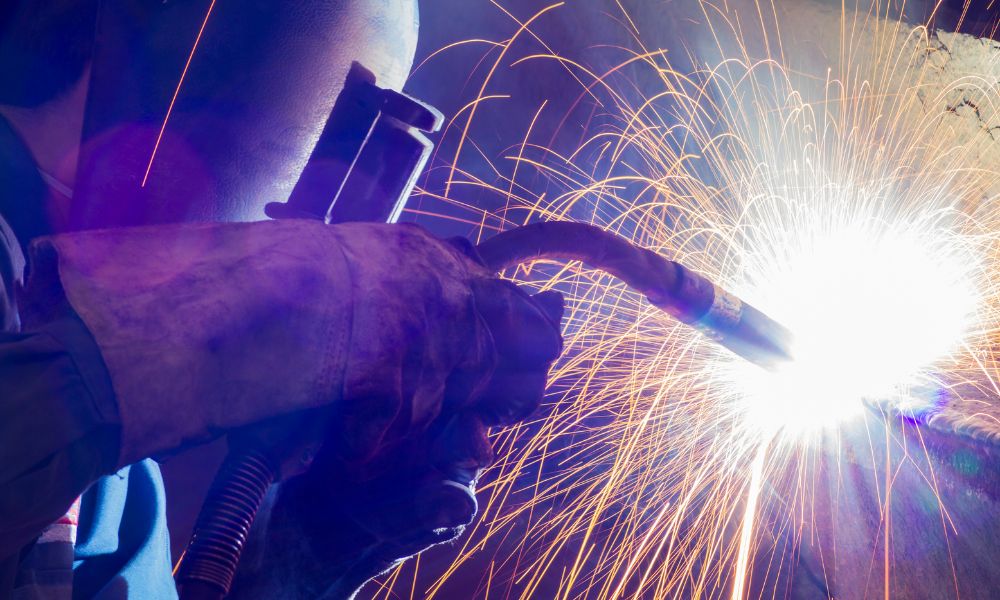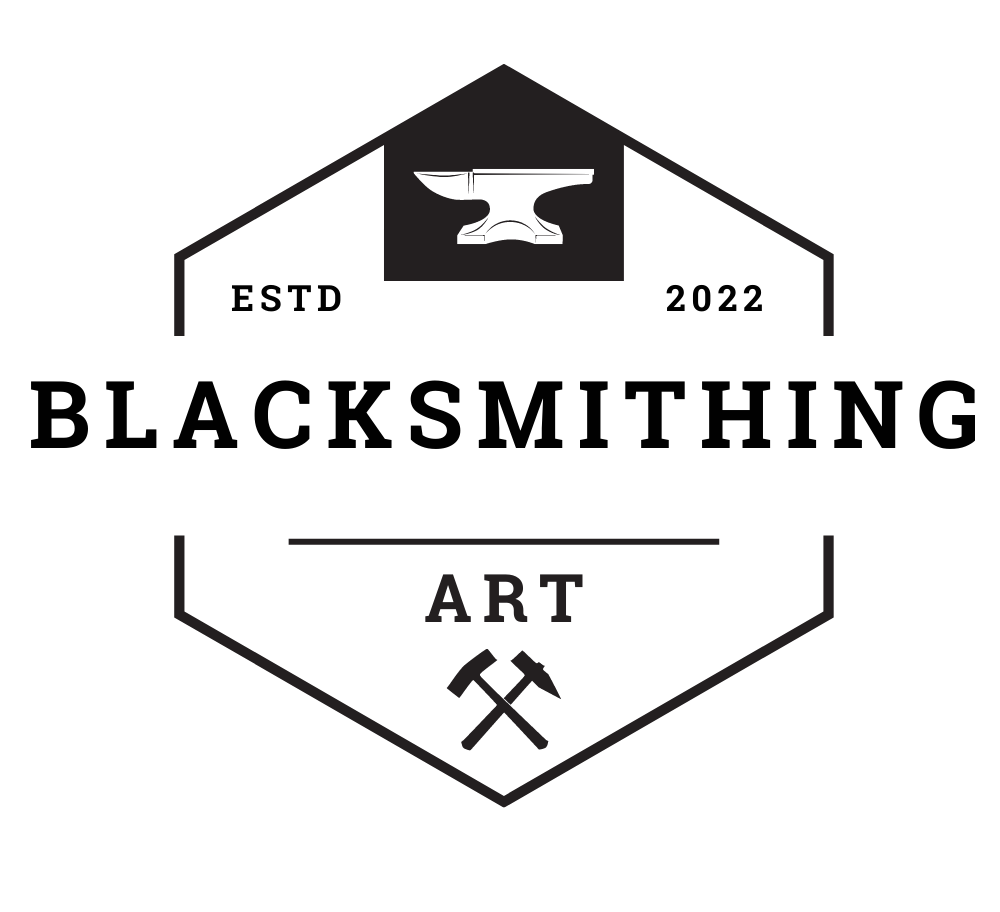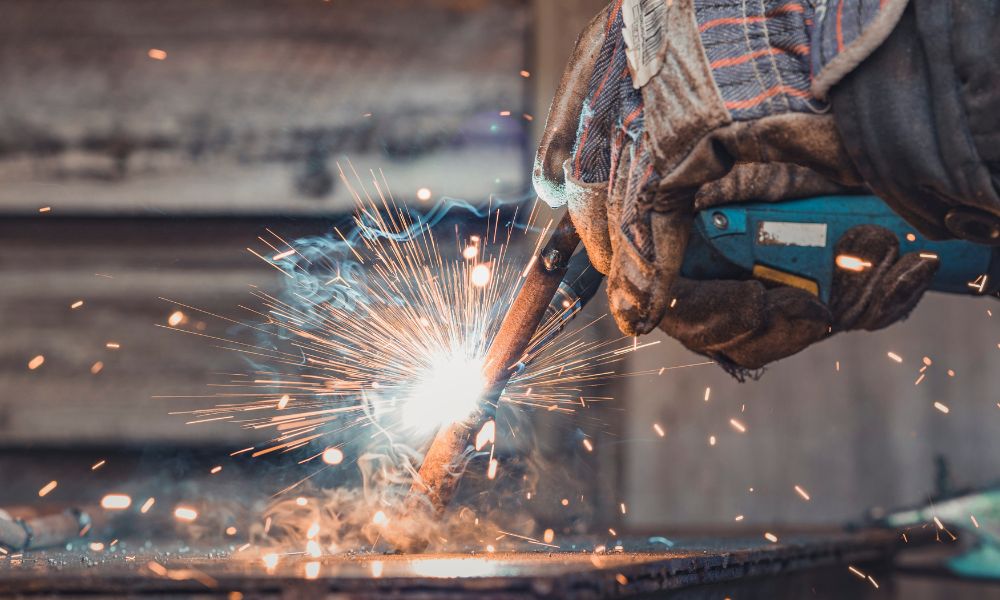Which advantages of MIG welding? MIG welding is widely used in various fields, such as construction, manufacturing, DIY welding projects, and repair.
This welding technique offers numerous benefits, including versatility, ease of use, and high productivity. In this article, we will take a closer look at MIG and explore its advantages, applications, and common challenges. A little part of the benefits:
- High electrode efficiency;
- Excellent wider weld beads;
- Lower heat input, etc.
For instance, high electrode efficiency allows optimal use of wire during welding. Additionally, there are wider weld beads that are strong and aesthetically pleasing.
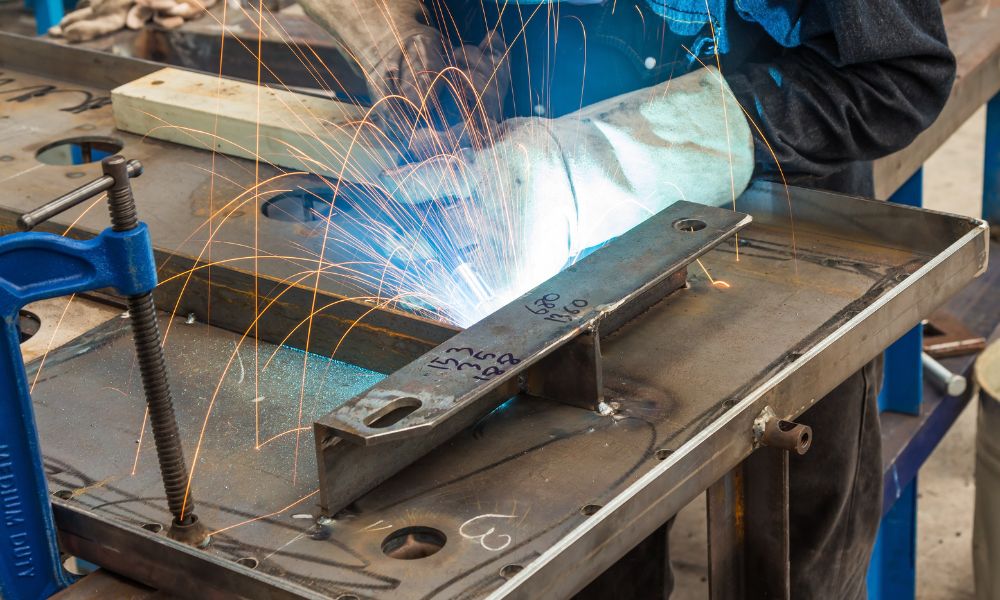
Contents
What common types of welding exist?
Metal can be welded in various ways, and the most popular methods are TIG and MIG. Each of these techniques has its own unique advantages and is suitable for different types of welding projects.
MIG welding
MIG welding uses a continuous wire feed electrode to join the pieces together. Commonly used in the automotive industry because a MIG welder weld thick metals in this field as a replacement for submerged arc welding.
Benefits
- Easy to learn. It can be mastered with minimal training, in contrast, to stick welding.
- Versatile. MIG equipment is used in different fields, like manufacturing.
- Welds quality is good. Spatter is minimal.
- Welding puddle control. Shielding gas creates protection from atmospheric contamination, and that provides the welding puddle to be more attractive.
Weaknesses
- Limits with thin materials. MIG is good for thick metals, but stick welding is much better.
- Limited vertical or overhead welding. MIG welding is not well-suited for vertical or overhead welding.
Equipment
The equipment has several components that work together. Here are the main components:
- Power source. It creates high heat input. To achieve the best results with MIG welding, choosing the right MIG welding machine for the job is important.
- Ground clamp. Essential for connecting the workpiece to the power source in MIG welding.
- MIG torch or welding gun. Used to guide the electrode wire into the weld pool.
- Gas system. The gas system provides a protective atmosphere around the weld pool to prevent contamination from atmospheric gases, such as oxygen and nitrogen. The most common shielding gases used in MIG are argon, helium, and carbon dioxide.
TIG welding
TIG welding uses non0consumable tungsten electrodes. Tungsten Inert Gas welding is widely used in aerospace because there are a lot of thin aluminum materials.
Benefits
- High-quality welds as a MIG weld.
- Weld pool control. More precise control over the pool in a more consistent weld bead.
Weaknesses
- Slow process. It is slower welding compared to MIG welding as a stick welding.
- Expensive. The welding machine price is much higher. Also, there is a high setup cost.
- Non-friendly for new users. For example, stick welding is lighter.
- Limited alloying elements.
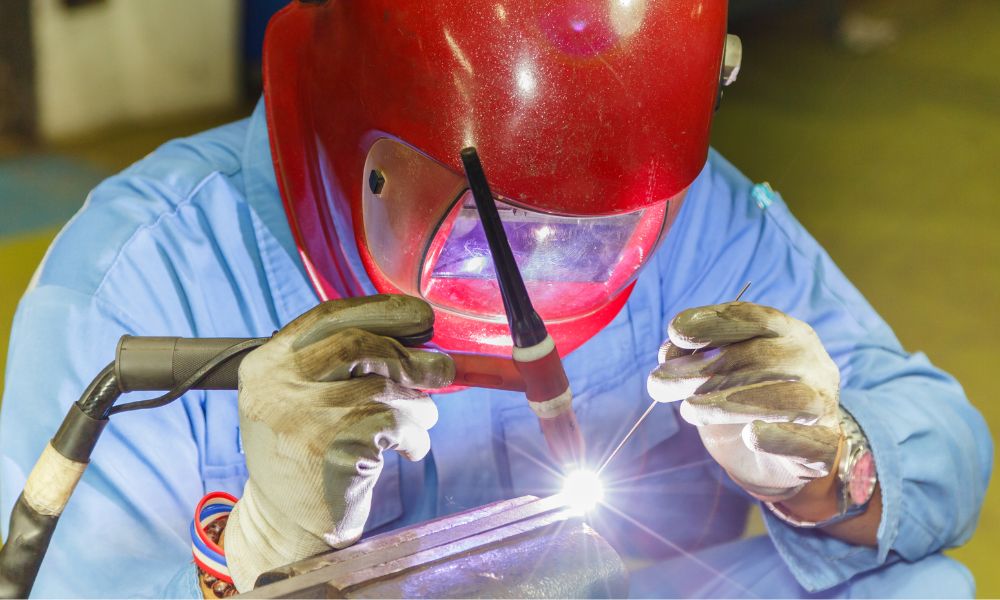
The main MIG welding advantages
MIG welding advantages have a lot of aspects. One of them is the cost of MIG welding machines. You can find requirement elements for a MIG welding machine at a lower cost on the market.
You can use a spool gun MIG torch. Spool gun MIG torch makes the job comfortable and increases the control over the process.
High heat input. In this way, you can achieve deeper weld penetration during MIG welding.
MIG for mass production
In mass production very important to be sure that you can do some number of things in a period rapidly. MIG is good for providing a fast welding process in mass production because it utilizes a continuous electrode wire feed, which enables faster welding speeds in comparison to other welding techniques.
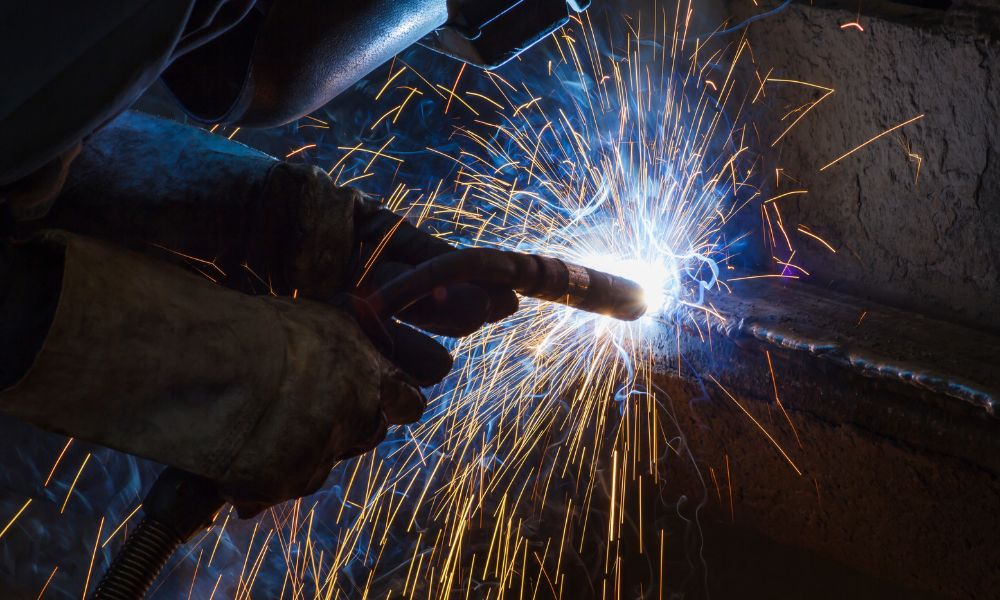
What else must a MIG welder know?
In addition to the benefits mentioned earlier, there is some useful information about the strengths of MIG welding that a welder should be aware of.
Welding techniques
MIG welding can be of two types, namely short-circuiting transfer and spray transfer.
- Short-circuiting transfer MIG welding;
- Spray transfer MIG welding.
Short-circuiting transfer MIG welding
In this case, a low heat input process is ideal for welding thin materials. It involves the wire electrode making contact with the base metal, causing a short circuit that melts the wire and forms a weld puddle.
This process is characterized by its low spatter and minimal distortion, making it suitable for welding in tight spaces or on materials that are prone to warping.
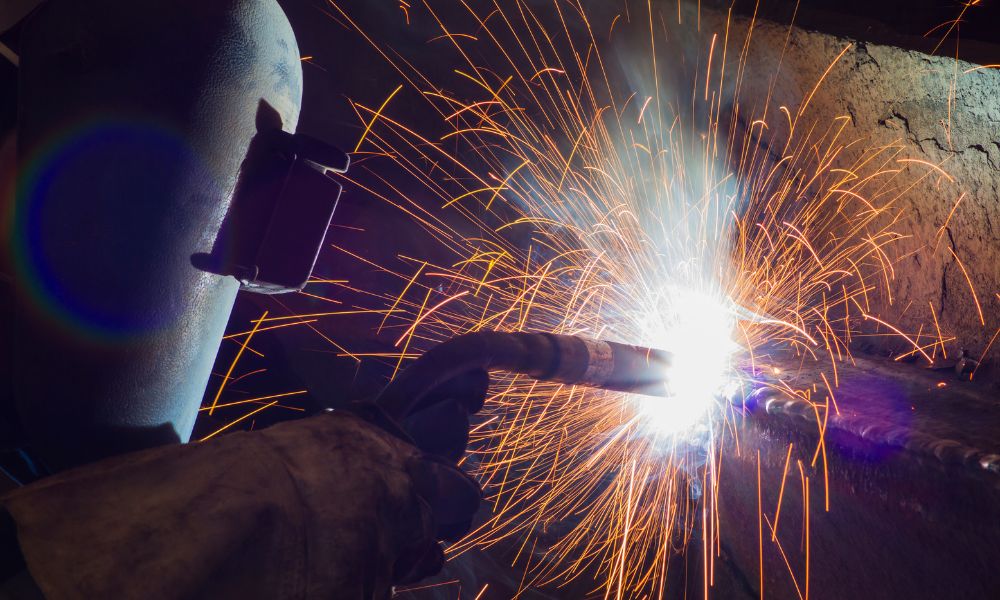
Spray transfer
On the other hand, spray transfer is a high-heat input process that is used for welding thicker materials. It involves the wire electrode being fed continuously, creating a spray of molten metal droplets that form a strong bond with the base metal.
This process creates quality welds with excellent penetration and deposition rates, making them ideal for heavy-duty applications.
The process can be used for joining sections of steel structures with thicker metals than about (0,25 inches). Require a high shielding gas flow to protect the weld and prevent destruction.
Understanding these two types of welding and their strengths can help welders choose the right technique for their specific application and achieve optimal results.
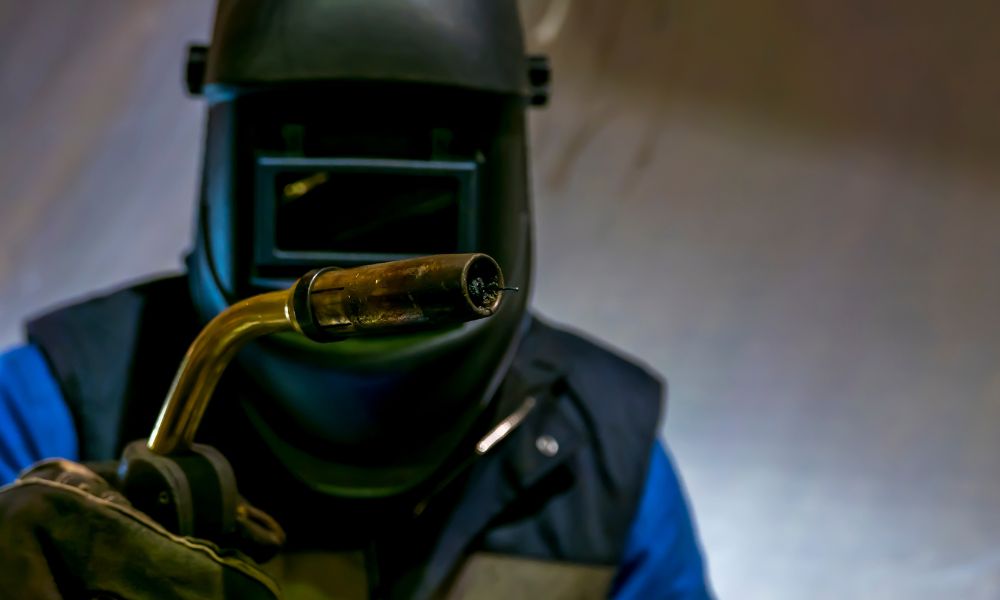
Safety benefits
Here you can see some key safety advantages that reduce the bad influence of MIG welding machines on the human organism:
- Reduced fumes;
- Reduced UV radiation;
- Improved visibility;
- Reduced noise.
Let’s attain a comprehensive comprehension of the significance behind each item from the list.
Reduced fumes
There are fewer fumes than SMAW (Shielded Metal Arc Welding) and FCAW (Flux-Cored Arc Welding). As a result, problems with health become lower because workers breathe not wasted air at the workplace.
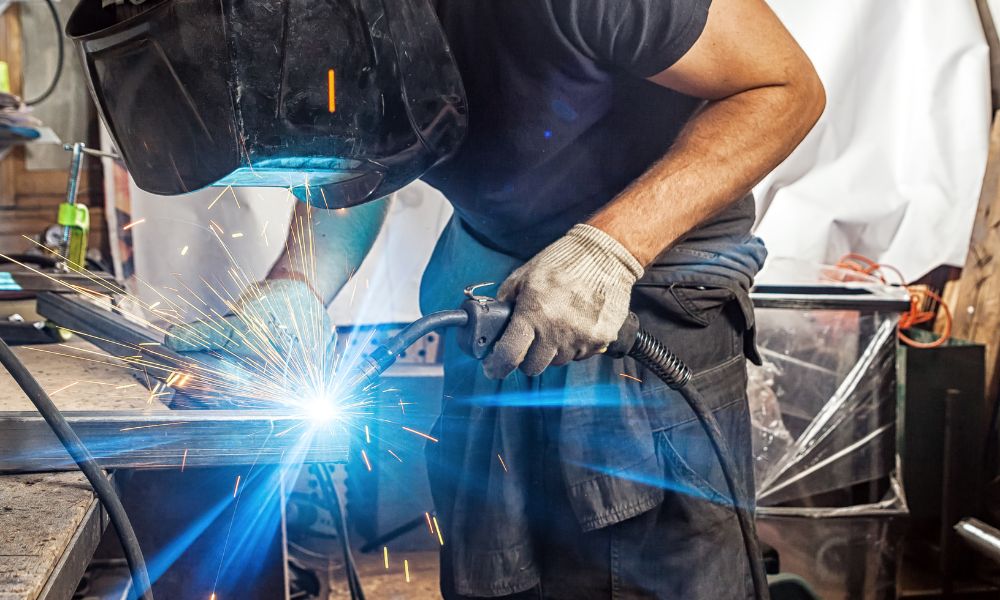
Reduced UV radiation
This is because the arc in MIG is more stable and concentrated, reducing the amount of UV radiation emitted.
Improved visibility
MIG produces less smoke and spatter than other welding processes, improving the welder’s visibility. This makes it easier to control the weld bead, which reduces the risk of errors or accidents.
Reduced noise
It is a big problem for welders because it is rarely taken seriously. Hearing loss occurs gradually, and measures for problem prevention are taken too late.
Using MIG welding machines reduces the risk of hearing damage for the welder and nearby personnel. But still, remember the basic rules and wear ear protectors always!
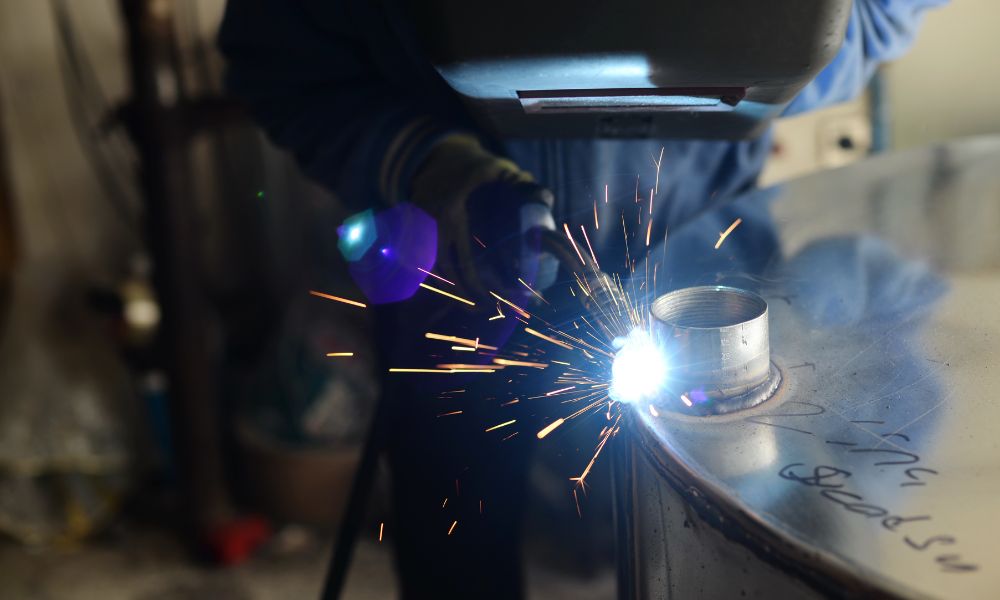
Why is it important to know the advantages of MIG?
The MIG is a highly effective and versatile welding process that offers several benefits over other welding processes.
By understanding the advantages of MIG, welders can make informed decisions about which welding to use for a particular application.
All advantages were written in the article. This makes it an ideal choice for applications where speed and efficiency are important factors.
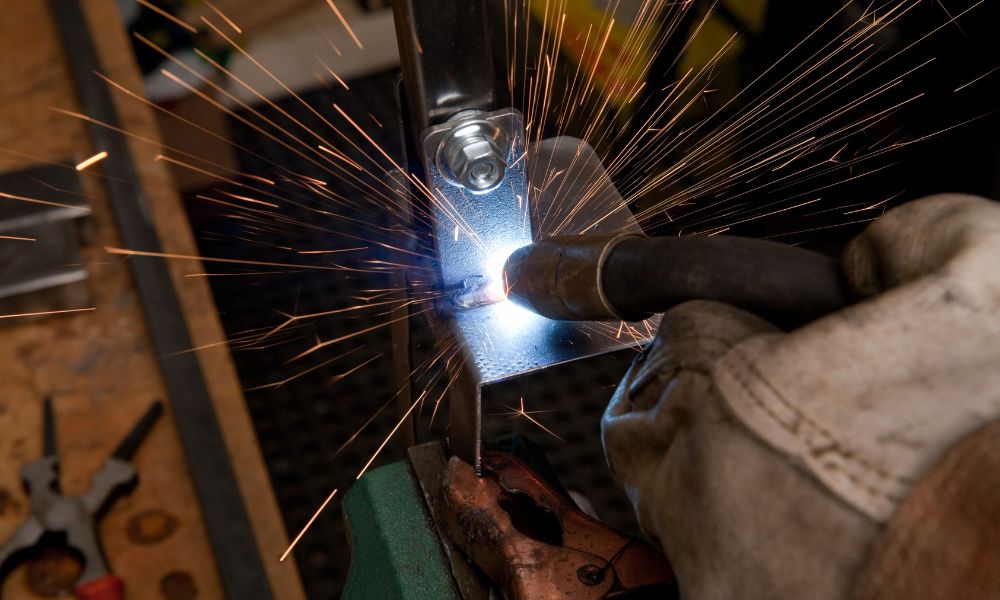
FAQs
What are the advantages and disadvantages of MIG welding?
The strengths of MIG welding compare to other welding methods (like stick welding) are:
– Weld metal length is cheaper;
– Low post weld clean up;
– Low metal distortions.
Disadvantages of MIG welding are:
– Restricted use of thin materials;
– Comfortable using just flat or horizontal welding positions.
What is the main advantage of MIG welding?
As a beginner learning MIG welding is easier for you compare to stick welding. The next criterion is cost. You can save money if you use MIG welding.
What are the advantages and disadvantages of MIG and TIG welding?
Both welding methods work similarly. They use an electric arc to create heat and melt the metal. The advantages of MIG welding are that it is cost-effective (MIG welding machine is cheaper) and more comfortable for a MIG welder. The disadvantages of MIG welding are the destruction of thin material and several welding positions.
Buying GTAW welding equipment needs more money, but this welding method produces high-quality welds.
Conclusion
In the article, we were shown the advantages and disadvantages of MIG. You can compare it with GTAW or stick welding and make some conclusions about the differences. Also, asked about techniques and their implementation.
MIG offers several advantages over other welding processes. These advantages include high deposition rates, ease of automation, and the ability to weld various materials and thicknesses.
Additionally, recent developments in the GMAW process have improved efficiency, quality, and safety. With proper training and equipment, GMAW can be a highly effective and versatile welding procedure for various applications.
